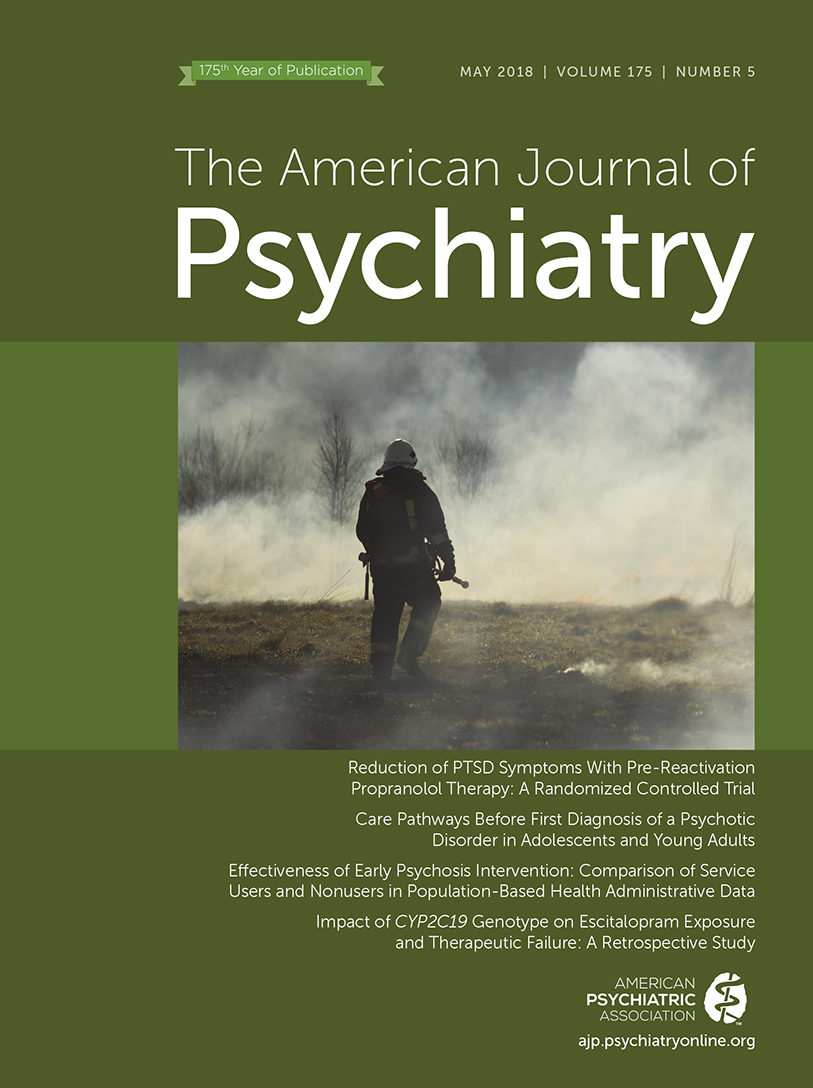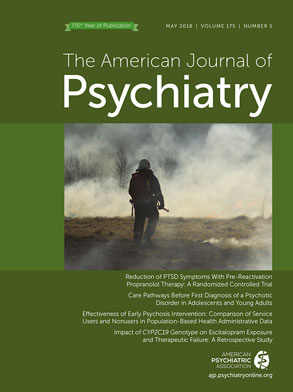Plato suggested that memory was like an aviary in which a different bird represented each specific memory. Memory retrieval, therefore, was a process of capturing the correct bird. And once the right bird was captured, the conscious mind could review the intact memory it had been seeking (
1). A more recent memory metaphor likened autobiographical memory to a vast filing system, with each file containing a representation of a particular past experience (
2).
During the past 25 years, such metaphors have been replaced by a connectionist model of memory postulating that memory storage is more like a spider web in which specific memories are represented by the patterns of connections among fibers throughout the entire network. Memories are not stored as intact entities, like Plato’s birds, but rather must be reconstructed by recreating a pattern of associated threads of information across an entire network. After retrieval, memories must again be consolidated and stored within this connectionist network through a process called “reconsolidation” (
2,
3). Preclinical studies indicate that memories are labile during both the retrieval and postretrieval reconsolidation process. Most importantly, pharmacological agents, such as anisomycin and propranolol, may disrupt this process, thereby weakening or even erasing such memories (
4).
This is the context within which to consider the provocative, theory-driven therapeutic approach developed by Brunet and colleagues, who report findings in this issue (
4). They propose that reduction, or even elimination, of traumatic memories during the reconsolidation process can produce a clinically significant improvement for patients with posttraumatic stress disorder (PTSD).
In a small randomized clinical trial, 30 patients with PTSD were given propranolol 90 minutes before they reactivated their traumatic memories by providing a written or oral account of the traumatic event. This procedure was repeated once a week for 6 weeks. When compared with a comparable group of 30 PTSD patients who received a placebo before undergoing the same brief traumatic memory activation procedure for 6 weeks, the propranolol group exhibited significantly greater reduction in PTSD symptoms. Unfortunately, the 6-month follow-up data are difficult to interpret because of participant attrition.
Among the strengths of the Brunet et al. study are that it represents a creative translational approach to pharmacotherapy for PTSD. The most successful treatments for PTSD are trauma-focused cognitive-behavioral therapy (CBT) approaches in which the active ingredients appear to be fear extinction and cognitive reprocessing of the traumatic memory itself (
5). Extrapolating from the connectionist model of memory as well as from preclinical studies with fear conditioning/extinction paradigms, Brunet et al. suggest that a pharmacological approach that attenuates or eradicates traumatic memories will reduce the severity of PTSD symptoms.
It is also exciting to consider the possibility that an antiadrenergic agent might yet play a significant role in PTSD treatment. Previous interest in propranolol has focused primarily on its potential as a prophylactic agent that might prevent the later development of PTSD among recently traumatized individuals. But evidence to support such a possibility has been inconclusive (
5). Furthermore, enthusiasm about prazosin, which appeared initially to show great promise, has been tempered by negative results from a large multisite VA Cooperative Study (
ClinicalTrials.gov, NCT00532493). So, despite robust findings, dating back to the 1980s, regarding adrenergic dysregulation in PTSD (
6), we have yet to demonstrate the efficacy of any antiadrenergic agent as an evidence-based treatment for PTSD.
What are the questions and concerns we might have about the study? There are the usual suspects: It is a small study, and one in which half the participants were lost to follow-up at the 6-month assessment point, so we don’t know the duration or stability of the propranolol effect. As the authors acknowledge, without additional controls we can’t rule out the possibility that propranolol actually disrupted memory retrieval, rather than reconsolidation. The study lacked a treatment manual (the authors considered it unnecessary because of the simplicity of the procedure), so we have no information on treatment fidelity and adherence. But these are all issues that can be addressed in future studies.
To me, the most intriguing and fundamental question is about the nature of the memories that were retrieved and, presumably, later reconsolidated during the study. There are different kinds of memories. Explicit/declarative memories record consciously available material, whereas implicit/nondeclarative memories are not consciously available. Traumatic memories are generally considered implicit, but they may be embedded in significant explicitly remembered contextual information. Different brain structures may play different roles in processing information within those two systems. Furthermore, different medications, such as propranolol, may exert different effects on these two memory systems. Intentional recall, as in the present study, is different from unintentional or flashback recall, such as the acute triggering of a traumatic memory by a sudden unexpected encounter with a traumatic reminder (a common scenario among PTSD patients). Indeed, there is good evidence that intentionally retrieved memories, as in the present study, are “deficient” because of short-term memory deficits, overgeneralization of autobiographical memories, and fragmentation of traumatic narratives, and because traumatic memories can be forgotten (
7). Brewin et al. (
8) have proposed a dual representation theory of PTSD that distinguishes between memories that can be retrieved and articulated in coherent written narratives and PTSD flashbacks, which involve a marked sense of reliving in the present and which appear to be stored in a separate, nonverbal, image-based, sensory memory system. Successful treatment requires the transfer of somatic/flashback memories to the verbally accessible memory system, where they can be reprocessed within a CBT protocol.
Last, but certainly not least, is the possibility that the hypothesis guiding this approach is overly simplistic. Successful recovery from PTSD may require much more than voluntary retrieval and reconsolidation of a traumatic memory after ingesting propranolol. After all, in effective evidence-based CBT treatments for PTSD, the work has just begun after retrieval of the traumatic memory; therapy consists of intense processing, reprocessing, and cognitive reframing of such memories before postsession reconsolidation occurs. Furthermore, powerful traumatic memories are not always voluntary and verbally accessible in PTSD patients, especially when dissociation occurs or when PTSD is comorbid with the retroactive amnesia of a traumatic brain injury (
9). If it can be shown that this approach really works, we will need to understand how and why it has been successful. Such research will necessarily enrich our understanding of fundamental memory processes as well as of the altered memory mechanism underlying PTSD.
In summary, this study may open the door to a completely new and effective treatment for PTSD. It will be encouraging indeed if these results can be replicated. It would be better still if we could achieve a better understanding of how disruption, by propranolol, of intentionally retrieved traumatic memories results in beneficial treatment for PTSD.

